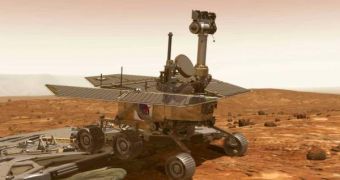This relatively new field of robotics refers to future NASA abilities of controlling numerous machines on distant planets via single central command units. Only recently, the American space agency has awarded the Aurora Flight Sciences, the MIT's Manned Vehicle Laboratory (MVL), and the MIT Humans and Automation Laboratory (HAL) with a proposal of constructing such a program that would make this seemingly impossible task a reality.
“Aurora sees this as an opportunity to expand its multi-vehicle coordination capabilities into the realm of planetary exploration. We view this project as a natural integration of our expertise in space systems and in tools for planning and coordinating autonomous teams,” the leader of Aurora's Autonomy Controls and Estimation Group, Dr. James Paduano, explains in a press release from the organization. The future control software will be able to closely control and monitor large teams of robots, engaged in explorations on Mars, the Moon, and any other planet, moon or asteroid.
One of the main challenges in the field of planetary exploration is to get the robots to act all by themselves, in a very “robust and autonomous” manner. That is to say, there is only so much mission controllers back on Earth can do to control the machines. Between our planet and Mars, an issued command takes about 10 minutes to reach the rover, and roughly the same time to return. This severely limits the array of actions that, for example, Spirit and Opportunity can carry out.
But if other robots could operate in teams, acting like a single unit, then they may provide each other with the data they require in order to navigate without human control. One could analyze the soil, to test for loose gravel, while another could be in charge of deciding the course of the entire group. Others could be assigned with taking pictures, or with performing chemical analyses of the soil. Regardless of what they would do, human control would be minimal, and it would only draw the main lines of the mission, establish the objectives, and so on.
“To address this problem, Aurora and MIT will combine multi-agent planning algorithms, human interfaces, and associated expertise into a multi-robot, human supervised system that can operate with long time delays between human interactive inputs,” the press release goes on to say.
“They marched in unison, seven of them, with Dave at the head. They wheeled and turned in macabre simultaneity; and melted through changes of formation with the weird ease of chorus dancers in Lunar Bowl,” acclaimed writer Isaac Asimov envisioned in his 1944 sci-fi book “Catch that Rabbit.” It would seem that a mere half a century later, the foundations of his vision are set, and that these autonomous robotic systems will soon become a reality.

 14 DAY TRIAL //
14 DAY TRIAL //